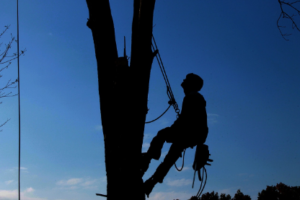Tree lopping is an important service that ensures your property is safe and looks great. But it would be best if you only trust a qualified arborist. They know how to cut trees properly and will think about the long-term health of your plants.
Some trees are protected and require council approval before they can be lopped. Check out this easy-to-read infographic to determine what rules apply in your area.
Maintenance pruning
 If you want your trees to be healthy and beautiful, they need regular maintenance. It can be done by pruning or trimming the branches. It will maintain their natural shape and reduce the risks of damage or disease. It can also increase light and air circulation around the tree, which is essential for the health of your garden.
If you want your trees to be healthy and beautiful, they need regular maintenance. It can be done by pruning or trimming the branches. It will maintain their natural shape and reduce the risks of damage or disease. It can also increase light and air circulation around the tree, which is essential for the health of your garden.
The main objective of maintenance pruning is to remove any dead, dying, weakened, or crowded limbs. It will help prevent a significant tree failure or injury to people and property. It will also promote new growth and improve the tree’s overall appearance. However, you must be careful when pruning a mature tree, as too much pruning can cause serious problems.
Trees are incredibly resilient, but they do have weaknesses. Infections, fungi, and pests can attack weak areas. If the wounds of the bark are exposed, the tree is vulnerable to rot and can become a host for insects or diseases. To prevent this, a professional tree lopper Adelaide Hills can prune the dead or infected areas of the tree while leaving the healthy parts untouched.
It will not only help maintain the tree’s health, but it will also protect your home and garden from falling debris or limbs during storms. Regular pruning will also encourage the development of lateral branches, which will help to balance the canopy and reduce the risk of storm damage.
To ensure the safety of your property, you should hire an arborist with experience in this type of work. They should have insurance covering the repair cost if they damage anything on your property. You can find this information by checking their credentials on the internet. You can do this by using the website ABNLookup or entering their company name into Google. You can also ask them to provide you with a copy of their public liability insurance.
Before hiring a local tree lopper Adelaide Hills, consider their price range and location. You should also check if they are registered with the council and have adequate public liability insurance. You can also look at their reviews on Facebook or Google. However, it would be best to remember that these reviews can be faked.
Aesthetic pruning
Aesthetic pruning is a form of artistic interpretation that uses art and design principles to work with trees and shrubs within their landscape context. It is based on Japanese horticultural practices and is a dialogue process between the gardener and the tree. Its goal is to add harmony, interest and beauty to garden spaces.
It involves a more holistic approach to pruning than maintenance pruning, which typically focuses on structural stability and health. Instead of removing entire branches and reshaping the plant’s shape, aesthetic pruning highlights a specific character unique to each specimen. It might be its foliage colour, attractive bark, graceful silhouette, or sculptural form. It may also provide a focal point, frame a view, or soften or enhance adjacent architecture.
Aesthetic pruning should not be done on young plants; it should wait until they are at least two to five years old. However, it can be a great way to improve the beauty of established trees by removing dead or damaged wood and opening up the canopy to allow airflow. It can also be an excellent way to encourage flowering and fruit production in the future.
When it comes to pruning, there are many different styles of pruning. Some are very formal and rigid, while others are more natural. Aesthetic pruning is a more creative style combining traditional Western arboriculture principles and Japanese garden pruning. This pruning is often done on a limited scale and is not meant to create an overly formal look but to highlight each plant’s character in a particular garden setting.